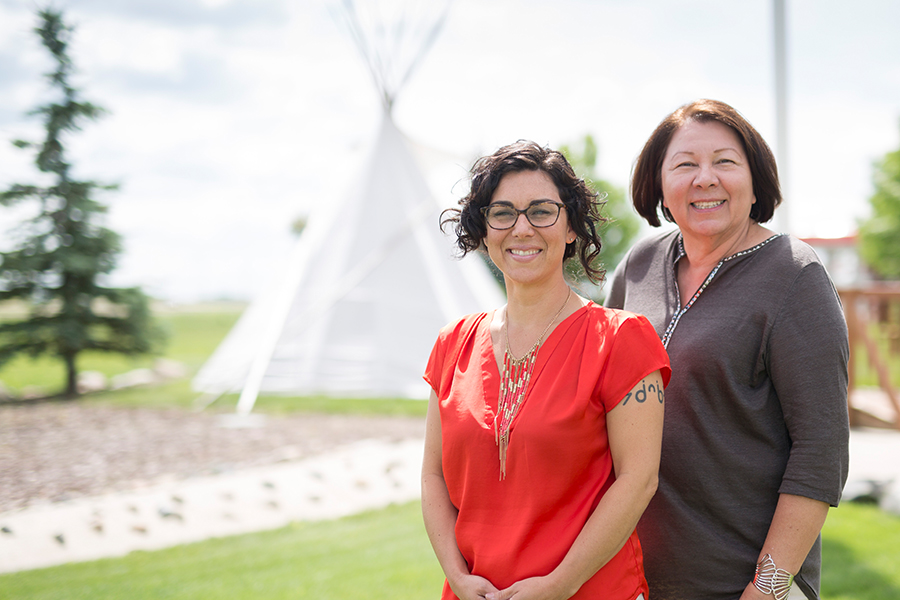
Preserving Indigenous languages
Historic Wanuskewin Heritage Park was the perfect place for Joan Greyeyes to take the new class of graduate students in Indigenous Language Revitalization for a welcoming ceremony to begin their master’s program this summer.
By James ShewagaThe Wanuskewin National Historic Site celebrates more than 6,000 years of cultural heritage and history of the Northern Plains Indigenous peoples, pre-dating the building of the Egyptian pyramids.
It is precisely that Indigenous culture and tradition that Greyeyes—the director of First Nations and Métis relations at the University of Saskatchewan (U of S)—is passionate about protecting and promoting. And the key to preserving any culture is ensuring that languages and dialects not only survive, but thrive.
“Language is so important,” said Greyeyes. “You need to have the basis of language and we are very lucky here in Saskatchewan. Our communities still have Indigenous language speakers, but there are other parts of Canada where they have lost that and we never want that to happen in Saskatchewan.
“I’ve always been an advocate for the revitalization of Indigenous languages and when I say that, I don’t mean just the ability to speak the language. When you revitalize the language, it also helps people retain and regain their culture, their customs and their traditions and that’s really important. That’s the basis of language.”
Without a current master’s program of our own at the U of S, Greyeyes and her staff partnered with the University of Victoria (UVic) to bring its master’s in Indigenous Language Revitalization program here this year. UVic’s program is the only one of its kind in the country, something Greyeyes hopes to change in the future.
“That is the ultimate goal here,” said Greyeyes. “We want to see the University of Saskatchewan have its own program and that’s the reason we are doing this. We may not follow everything the same as the University of Victoria when we develop our program, because we may develop a program that is more unique for our territory for the Great Plains, Alberta, Saskatchewan and Manitoba … We have so many great programs, but this is another area that we need to build.”
For their part, UVic officials were pleased to partner with the U of S to bring the course to Saskatoon, the first time the program has been offered outside of Victoria.
“I was excited when the University of Saskatchewan first approached us about this possibility,” said Onowa McIvor, director of Indigenous Education at UVic.
“Our vision is to work together with our university partner and the group of students who are already leaders in language revitalization who are now training to become ambassadors and visionaries and to truly lead the charge of the language revitalization movement in Saskatchewan. In the wake of the Truth and Reconciliation Commission’s findings in 2015, this program is part of a larger movement of language revitalization activities across the country.”
Greyeyes said the program perfectly fits with the U of S commitment to indigenization, to promoting Aboriginal achievement and to implementing the TRC calls to action for post-secondary institutions.
“This is definitely right in line,” said Greyeyes. “And what is so important when we talk about the revitalization of Indigenous languages, we’re talking about the revitalization of Canada’s heritage languages. And when it comes to our Indigenous languages, everyone in Canada should be concerned about that.”
The majority of the 18 students that started this summer’s master’s program at the U of S off-campus English River site are from Saskatchewan, with others coming from Alberta, the Northwest Territories and as far away as California. Greyeyes said this cohort will train a terrific talent pool of homegrown experts who can help the U of S establish its own master’s program in the coming years.
“It will give the University of Saskatchewan a group of First Nations and Métis people who will have a master’s in Indigenous language revitalization who we can hire to become faculty or staff,” said Greyeyes. “We will have a good group of students who can also assist us in developing our program once we get to that point.”

